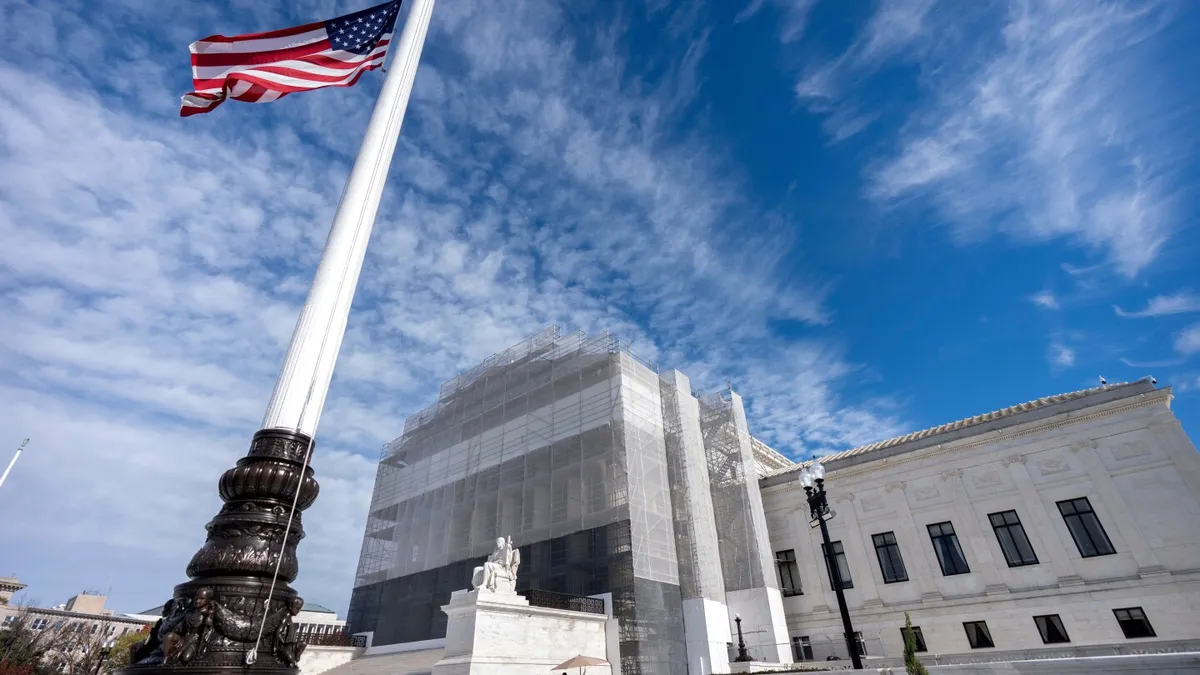
President Donald Trump has issued a stark warning regarding the potential repercussions for the United States if the Supreme Court decides to strike down the extensive tariffs he imposed this year on nearly every country globally. During oral arguments on Wednesday, the justices appeared skeptical of Trump's broad claims of authority to impose tariffs at his discretion. Despite this uncertainty, experts believe that Trump will still have numerous options available to maintain aggressive taxation on imports, even if the court rules against him.
Georgetown trade law professor Kathleen Claussen expressed confidence that Trump could reconstruct the existing tariff framework using other legal authorities. “It’s hard to see any pathway here where tariffs end,” Claussen remarked, emphasizing that Trump’s ability to re-establish tariffs is highly feasible.
During the hearing, lawyer Neal Katyal, representing small businesses challenging the tariffs, argued that Trump does not require the extensive powers he claims under the 1977 International Emergency Economic Powers Act (IEEPA). Instead, Katyal pointed out that Congress has delegated tariff authority to the executive branch through several statutes but has carefully limited how this power can be exercised. He stated, “Congress knows exactly how to delegate its tariff powers.”
In his second term, tariffs have become a key element of Trump’s foreign policy. He has imposed double-digit reciprocal tariffs on most countries, justifying these measures by citing America's persistent trade deficits as a national emergency. According to calculations from Yale University’s Budget Lab, the average U.S. tariff has surged from 2.5% when Trump took office in January to an alarming 17.9%, marking the highest level since 1934.
Despite the constitutional stipulation that only Congress has the power to tax and impose tariffs, Trump is not at a loss for alternative strategies to implement tariffs. Stratos Pahis of Brooklyn Law School noted that the president “will have other tools that can cause pain” even if the Supreme Court rules against his current tariff strategies. Here’s a closer look at some of the viable options available to him:
The United States has a robust mechanism to address countries it accuses of engaging in unjustifiable, unreasonable, or discriminatory trade practices, known as Section 301 of the Trade Act of 1974. Trump has effectively utilized this provision, particularly against China, to impose significant tariffs in response to their aggressive trade tactics. As trade official Ryan Majerus explained, “You’ve had Section 301 tariffs in place against China for years.” This authority allows for tariffs that can be extended indefinitely after a four-year period, though investigations and public hearings are typically required before implementation.
Earlier this year, the U.S. Court of International Trade ruled against Trump’s use of emergency powers to address trade deficits. This ruling highlighted the limited authority granted by Congress under Section 122 of the Trade Act of 1974, which allows the president to impose tariffs of up to 15% for a period of 150 days. While this authority has never been utilized to apply tariffs, it remains an option without the need for an investigation.
Throughout both of his terms, Trump has leveraged Section 232 of the Trade Expansion Act of 1962 to impose tariffs on imports deemed threats to national security. These tariffs have included those on foreign steel and aluminum, and more recently, on a range of products including autos and furniture. As John Veroneau, former general counsel for the U.S. trade representative, noted, “It’s difficult to get courts to second-guess a determination by a president on a national security matter.”
In a surprising twist, Trump may consider reviving tariffs from the Great Depression era. The Tariff Act of 1930, known for the controversial Smoot-Hawley tariffs, empowers the president to impose tariffs of up to 50% on imports from countries that discriminate against U.S. businesses. Notably, no investigation is required, and these tariffs can remain in place indefinitely. Despite their historical unpopularity, Treasury Secretary Scott Bessent indicated that the administration is contemplating this option as a fallback if the Supreme Court rules against Trump’s emergency powers.
While the Smoot-Hawley legislation has received widespread criticism, Veroneau suggested that successfully implementing it could grant Trump a unique legacy as the first president to do so. This strategic maneuvering showcases the complex landscape of U.S. trade policy and the ongoing battle over tariff authority.